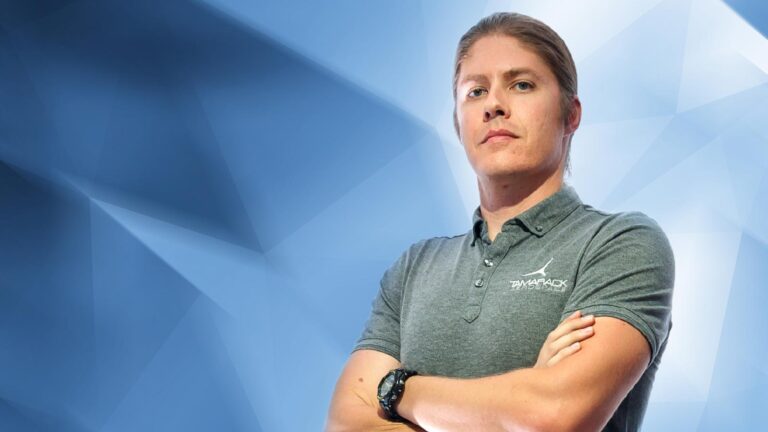Stay Up to Date
Submit your email address to receive the latest industry and Aerospace America news.
Haldan Gates, 31, flight group lead, Tamarack Aerospace Group
Aerospace engineer Hal Gates was working at a part-time job unrelated to aerospace back in 2010, when an acquaintance introduced him to the founder of Tamarack Aerospace, a 30-person engineering and aircraft modification company in Idaho. Tamarack ended up hiring Gates, who now oversees flight testing of the company’s Atlas Active Winglets, an after-market product for business and general aviation airplanes. Small flaps inboard of the winglets protect the wing from excessive stress during wind gusts or high-G maneuvers by rising and temporarily turning off the aerodynamic effects of the winglets. This increases wing-bending stresses even as they improve fuel- efficiency. The FAA, European Aviation Safety Agency, Transport Canada and Brazil’s National Civil Aviation Agency have approved the technology for all Cessna Citation C525, C525A and C525B business jets.
How did you become an aerospace engineer?
My family is peppered with engineers of various disciplines, and there are a few naval aviators as well. I’ve always loved puzzles and technical challenges, and airplanes have always captivated my interest. When it came time to choose a career, aerospace engineering seemed like the natural choice. I have a Bachelor of Science in aerospace engineering from Georgia Tech. I earned my pilot’s license and [Instrument Flight Rules] rating, which has helped me considerably in my various roles here at Tamarack. I actually got this job through networking. I had a part-time job in a coffee shop in 2010, and one of my regular customers introduced me to his cousin, Nicholas Guida, Tamarack founder and chief technology officer. I had taken some elective courses that had given me experience programming in C++. I was given a test assignment based on a project that the company was working on and we went from there. When I first started at Tamarack, I was building structural analysis tools. After that, I was involved in the system development and environmental qualification testing. We’re a fairly small company, so we all do a bit of engineering cross-training. Now, most of my responsibilities revolve around flight testing, writing test plans and reports, installing instrumentation and collecting data onboard.
Imagine the world in 2050. What do you think will be happening in aviation?
A lot of our airspace system is still designed for use without automation — instrument approaches that take you out of your way if you’re approaching the airport from a particular direction because of cockpit workload considerations, for instance, or arrival and departure procedures that divert you out of your way for traffic separation in congested airspace. As the aircraft themselves take over more responsibility — and more importantly, are communicating directly with each other for separation and sequencing — it will allow more efficient flying, which will ultimately expand access to aviation and allow more flexibility. I think that in 2050, we’ll have better air cargo, better aerial emergency services, and more convenient air travel directly between more cities. I think it’ll be based on the logical expansion of cockpit automation. I have some mixed feelings about it as a pilot, but as an engineer I’m excited to see where it takes us.
About Debra Werner
A longtime contributor to Aerospace America, Debra is also a correspondent for Space News on the West Coast of the United States.
Related Posts
Stay Up to Date
Submit your email address to receive the latest industry and Aerospace America news.




